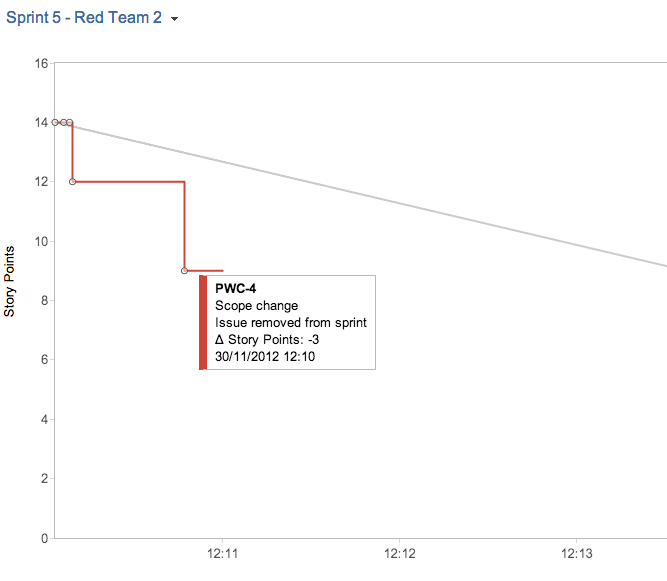
Last Wednesday I had the good fortune to attend Culture Con 2012, and let me tell you, it was brilliant! I wanted to share what I learned at the event as there was some gold! First off, kudos to Dyn for organising and Zendesk for hosting the event.
Culture Con, surprise surprise, was all about the culture of a company. For some people it touched on entitlement, others were interested in hiring for culture fit, some wanted to know how to build a culture and others wanted to know how to keep a culture alive as the company grew. The audience was primarily HR Directors of technology companies. I have a new found appreciation for what these HR Directors do day-to-day, and the challenges they face. Hat tip to Julie Rogers and the Atlassian Talent team for putting up with all of the Atlassians and their needs and wants!
People are Assets, not Expenses
Hal Halladay of Infusionsoft brought something interesting to my attention: business managers should be looking at people today as they looked at factory machinery in the 20th century – as a tangible asset that lives on their Balance Sheet, as opposed to an expense that is only present on the P&L. In the 20th century with the explosion of factories during the industrial revolution labour became part of the production lifecycle. However, labour was seen as an expense as one person could be easily changed for another. Labour was not a fixed asset that lived on the balance sheet like a machine.
Fast forward to the 21st century and we are still treating labour as an expense on the Balance Sheet. As an employee you are an expense, part of the COGS (cost of goods sold) of a product. However, you and your tacit knowledge do not appear on the Balance Sheet. This, despite the fact that you are not easily replaceable, despite the fact that today labour is the largest expense of these technology companies.
So, what do we do? Well, companies have been manufacturing assets in the form of IP that stifles innovation, while at the same time we see AcquiHire become commonplace. These seem at odds. We are acquiring companies for their talent but we can not add that to our balance sheet as anything except goodwill. And we pursue IP that is so broad and vague that any company could be at risk of being sued into oblivion.
Hal argues that we need to start looking at labour in a different manner, that it is time to start treating your employees as an asset on the Balance Sheet. Of course, the GAAP (generally accepted accounting principals) doesn’t support this today, so we can’t just make the change. Something to ponder for your own company.
Building a Culture
There were a number of speakers on this topic throughout the day. A few of the tips from Mikkel Svane of Zendesk were really valuable as he was sharing how Zendesk was scaling quickly while retaining their culture. A few of the suggestions that I picked up on:
Cross-functional Outings
I think the cross-functional outings could be really useful. For example, Support and Engineering, or Talent and Sales. We don’t do anything like this at Atlassian today so it is something I am going to try. Usually we’re doing outings within our team, not more broadly.
Buddy Lunch
Buddy lunches are something we certainly do at Atlassian today – I was Mike Sharp’s buddy back in the day, and Michael Knighten was mine. They are a lot of fun and work well. One interesting twist is that at Zendesk they give a gift card for the lunch to the new employee instead of the buddy. They found that this approach led to the lunches happening sooner, often in the first week as opposed to a few weeks later when the existing employee (the buddy) had time – which is too late to make a first impression.
Company Yearbook
I can’t actually remember if this was from Mikkel or someone on the panel which followed his talk but I thought the idea of a company yearbook was killer. Every December you get a one-pager from each employee and put it into a yearbook like you had at high school. This could be online or printed. Share what you worked on, your great achievements for the year and post a photo. Not too hard. Killer idea. I think I’ll get this one going at Atlassian this December.
Bi-Weekly Onboarding
Evan Wittenberg of Box shared how they were able to scale to 100 new hires a quarter by dropping back to bi-weekly onboarding. They got the same throughput by moving 50% of the hires forward one week and the rest back to the following week – freeing up his teams time and also that of the department heads that would present to the new hires every week. Interesting for me was that a few people mentioned a one week onboarding process while Atlassian has a six week onboarding and all the new hires proceed through it together. It is called Bootcamp and Ted Tencza spoke on this at Summit 2012.
Leadership Lunch
At Atlassian we have Founder lunches for all new hires. The Leadership Lunch takes this one step further by making one member of the leadership team available once a month for lunch. It allows employees to sit with an executive and ask them questions, even if they are not a new hire. I really like this approach for bringing Q&A to a casual setting for all employees on an ongoing basis, especially as a company scales. Great idea.
Value the Culture
Unfortunately VC’s don’t seem to value culture very much today according to one of the panelists, although they should as it is key to getting to product/market fit quickly. If you have a team of awesome people but they can’t work together well and self-organise then you are not going to get anywhere. Great point.
It also seems like some companies don’t value the culture – particularly when they are VC backed or owned by PE. These companies are driven by results, culture be damned. Boy it would be hard to work in a place like that!
Internal NPS
One way to measure the culture of a company was to conduct an internal NPS. Every quarter send an NPS survey out to the employees, asking questions like “How likely are you to refer to us as a great place to work?”. Love this idea. At Atlassian we use the Mood App which is an iPad app that rotates through questions. There are iPads at the doors for every office globally and people press one button (1 – 5 using smily faces) to show how they feel about the statement today. Our Mood App is not as scientific but it is still a great barometer. Either way, there is room for improvement at Atlassian in this regard.
Skip Lunches
An interesting approach to getting a feel for the culture in different departments of a company. In this approach you cut out the manager and a member of the HR team takes a team for lunch. So, you’ve got someone from the HR team taking the three/four/five/whatever number of people from one team out to lunch without their manager. An interesting approach, not sure how I feel about it cause it kind of negates our open company, no bullshit value. Perhaps this would work better somewhere else.
Dream Manager
How about this fella: Donavon Roberson, Dream Manager at Infusionsoft. Infusionsoft value their culture so highly they have recently hired a dream manager whose job it is to help employees acknowledge, articulate and achieve their dreams. What is your dream?
This, to me, seems very freaking progressive. I don’t know what to make of it and want to learn more. Thankfully Infusionsoft have a whole host of resources around their culture. Check it out.
One thing that Donavon mentioned was that they had distilled the five levels as described in Tribal Leadership down to two things – introvert and extrovert. He felt it was possible to use this gauge to identify how to work with different people and move them up to the next stage.
ELF’s
Emerging Leadership Forum was a really novel idea raised by one of the attendees. They are held once per month and are invite only. The goal is to prepare people for future roles in leadership by tackling questions and problems that they will face in those roles. Brilliant idea, a huge +1 from me on this. Something we could do better at Atlassian I believe.
Conclusion
Culture Con was fantastic. You should definitely add it to your list to attend next year. I will be going back, without a doubt. To the organisers, thanks for having me. To the attendees, thanks for the gold!







